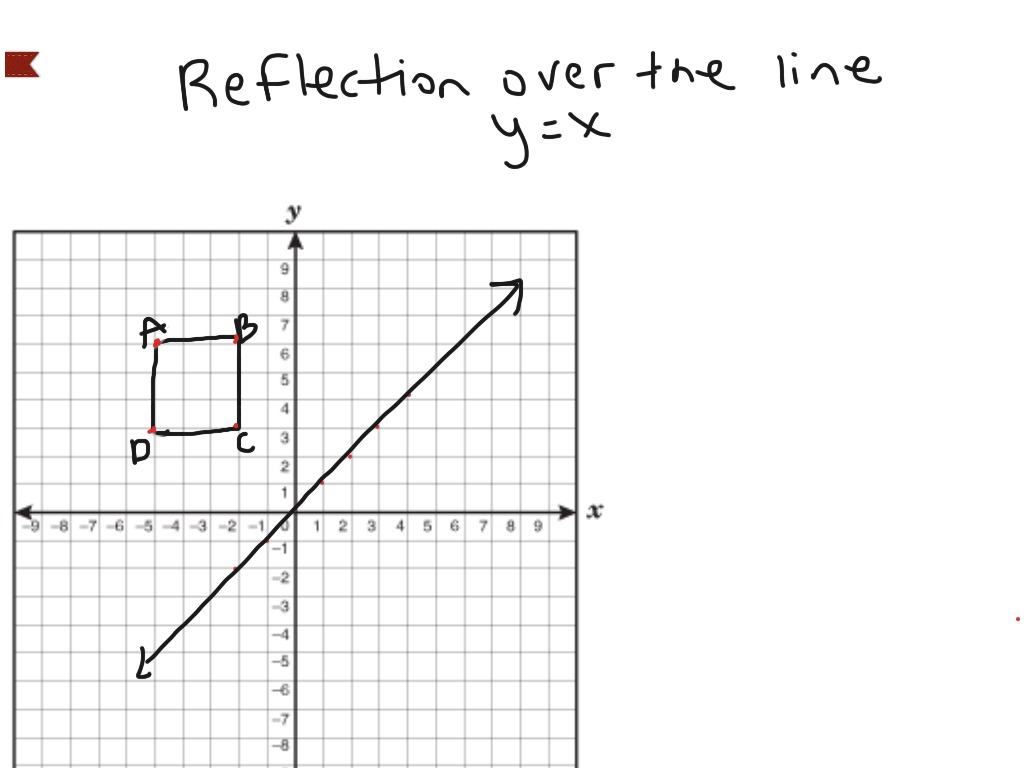
Then, a reflection in the 𝑥-axis can be produced using the function 𝑦 = − 𝑓 ( 𝑥 ), and a reflection in the 𝑦-axis can be found using the function 𝑦 = 𝑓 ( − 𝑥 ).Īs an aside, we might ask to verify the above definition with a simple check. As we will see, these two types of reflections are simple to understand visually, and have a similarly straightforward algebraic interpretation.ĭefinition: Reflecting a Function in the Horizontal or Vertical AxisĬonsider a function 𝑦 = 𝑓 ( 𝑥 ) that is plotted on the standard 𝑥 𝑦-axis. These can all be understood algebraically as well as visually, although the simplest case is the reflection in either of the axes.

It is possible to reflect any function through any straight line, such as the line 𝑦 = 𝑥 or any other of the form 𝑦 = 𝑚 𝑥 + 𝑏. This explainer will focus on what happens to a graph when it is reflected in the 𝑥-axis or 𝑦-axis. Fortunately, many transformations are simple to explain using intuitive algebraic rules, especially for some types of translations, reflections, and dilations. Given that a function is ideally written as a formula or an algebraic expression, it is a natural extension to ask how transforming the function can be represented within this framework. If a function is well-defined (either algebraically or with a suitably descriptive graph), then its qualitative behavior can be known at all points, and we might then be interested in how the function behaves when it is subjected to various transformations. In many senses, understanding the effects of transformation on a function can be thought of as a generalization of the above approach. Approaching the topic in such a way will allow for a visual understanding of transformations to be combined with concepts that are drawn from coordinate geometry. A common way of illustrating this is to refer to the vertices of a shape, which can be expressed using precise coordinates and hence can have these movements tracked as the result of transformations being applied.

Once these notions are understood intuitively, it is common to begin treating the subject a little more precisely, with the aim of understanding exactly what happens to a shape when it undergoes some combination of transformations. Often, these concepts are illustrated using polygons and other common concepts, usually with familiar and ubiquitous shapes, such as triangles and circles. One of the fundamental concepts in geometry is that of transforming a shape with the standard actions of translation, rotation, reflection, and dilation.
#Line reflection graph how to
And then you can see that indeed do they indeed do look like reflections flipped over the X axis.In this explainer, we will learn how to reflect a graph on the 𝑥- or 𝑦-axis, both graphically and algebraically. And this bottom part of the quadrilateral gets reflected above it. So you an kind of see this top part of the quadrilateral And what's interesting about this example is that, the original quadrilateral is on top of the X axis. We have constructed the reflection of ABCD across the X axis. And we'll keep our XĬoordinate of negative two. Unit below the X axis, we'll be one unit above the X axis. If we reflect across the X axis instead of being one And so let's see, D right now is at negative two comma negative one. So this goes to negative five, one, two, three, positive four. So it would have theĬoordinates negative five comma positive four. Units below the X axis, it will be four units above the X axis. The same X coordinate but instead of being four C, right here, has the X coordinate of negative five.

The same X coordinate but it's gonna be two
:max_bytes(150000):strip_icc()/ReflectionLaw-5946c6dd5f9b58d58a2f2efc.png)
I'm having trouble putting the let's see if I move these other characters around. So let's make this right over here A, A prime. So, its image, A prime we could say, would be four units below the X axis. So we're gonna reflect across the X axis. So let's just first reflect point let me move this a littleīit out of the way. Move this whole thing down here so that we can so that we can see what is going on a little bit clearer. So we can see the entire coordinate axis. And we need to construct a reflection of triangle A, B, C, D. Tool here on Khan Academy where we can construct a quadrilateral. Asked to plot the image of quadrilateral ABCD so that's this blue quadrilateral here.


 0 kommentar(er)
0 kommentar(er)
